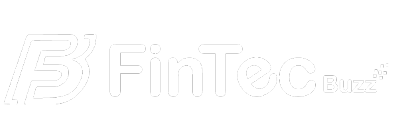Find out how banks can reduce tech debt and embrace new technologies.
Carl, can you give us a brief overview of your role at Dragonfly and your experience in the banking industry?
I am a member of the Dragonfly Financial Technologies executive management team in the role of the chief revenue officer (CRO). As the CRO I am responsible for sales, revenue expansion and growth, market intelligence, competition, and account management. I have over 27 years of experience in digital banking and global payments and 29 years in global sales management. Prior to joining Dragonfly, I held executive roles and lead consulting, sales, revenue, marketing and account management teams at EDS, Hewlett Packard, Oracle, Sterling Commerce, Fundtech/Finasta, ACI, Infosys and most recently Alacriti.
I have managed deployments and revenue models of platforms on both public and private cloud, SaaS, and on premise with an in-depth understanding of digital payments and digital banking, financial payments, and the banking industry. My areas of focus include international and domestic digital banking, core deposits and lending, bill presentment and payment, immediate payments, SWIFT, TCH, FED, P2P, Zelle, and NACHA payments, payment hubs, trade finance, cash forecasting and management, mobile banking, financial security, AI, ML and analytics, fraud, and risk management.
Can you explain what tech debt is and why it’s a significant issue for banks today?
The term technical debt isn’t new and has been around since 1992. Its definition has evolved from speaking about the upkeep and maintenance of software platforms and development, to the entire technology strategy and operations. For years, banks have relied on legacy, monolithic technology to power and scale their digital banking operations from onboarding to information reporting and payments. But as traditional banks compete with nimbler, more agile and adaptive FinTechs, legacy technology, monolithic applications, and the significant tech debt is standing in the way of banks competing for business and corporate customers. A McKinsey study, “Demystifying digital dark matter: A new standard to taming technical debt,” estimates the cost of one company’s tech debt as anywhere between 15-60% of every dollar spent on IT. In the same study, a large bank estimates that its 1,000 systems and applications together generate over $2 billion in tech debt costs.
Tech debt is a significant expense and risk to the bank but is often hidden deep within the underlying fabric of the front and back-office systems. Many banks outsource their technology operations to a SaaS or provider and do not have full transparency of their tech debt. But they are devoting a significant amount of their technology spend to maintaining, working around, and keeping these legacy monolithic systems in place.
In the recent Dragonfly State of Banking Survey, more than 53% of banking executives expressed concern about tech debt. What specific aspects of tech debt are most troubling for these executives?
In our recent State of Banking survey, banking executives confirmed they are very concerned about their current dependency on legacy technology and rising tech debt. Furthermore, they believe legacy technology/tech debt is standing in the way of their bank’s success. The key concerns for 2024 include protecting and growing deposits, fraud, staffing resources, feature function/competitive gaps and budget.
Over half of the surveyed executives believe that tech debt is standing in the way of their bank’s success. Can you elaborate on how tech debt directly impacts a bank’s ability to compete and succeed?
In addition to legacy technology/tech debt issues, banks believe the biggest challenges to digital business banking success are staffing resources, innovation and feature function/competitive gaps and budget. That said, increasing resources and adding robust features to banks’ digital banking arsenal will definitely help banks to get a leg up on their competition and improve their overall customer experience.
FinTechs are known for their agility and innovative solutions. What are some of the key advantages that FinTechs have over traditional banks when it comes to digital business banking?
FinTech companies have several key advantages over traditional banks due to their innovative and technology-driven approach. For example, FinTechs have lower operational costs due to a lean and efficient operational structure compared to traditional banks and don’t have the overhead costs of maintaining extensive physical back office data centers and “brick and mortar” branch networks, so they can pass on cost savings to customers in the form of lower fees, along with an improved client experience.
Another advantage is that FinTechs are also at the forefront of technological advancements in the financial sector leveraging cutting-edge technologies such as AI, machine learning, big data analytics, and mobile platforms to provide seamless and user-friendly financial services. It also enables FinTechs to offer innovative products and services that traditional banks may struggle to match.
FinTechs are also typically more customer-centric and responsive to changing customer needs and preferences. They can do this because they are faster and more agile with their streamlined operations and lack of legacy systems, allowing them to adapt and innovate more quickly than traditional banks. They can also rapidly develop, test and launch new products or services to meet emerging market demands. Fintechs also prioritize user experience (UX) and design their platforms and applications to be intuitive, user-friendly, and accessible across multiple devices. The increased accessibility allows them to reach a broader customer base, including underserved or unbanked populations. However, it’s important to note that while FinTechs have these advantages, traditional banks still hold advantages in areas such as customer trust, regulatory compliance, broad product offerings, and they have access to large amounts of capital.
What are some of the most common challenges banks face with their legacy technology systems?
Banks often face several challenges with their legacy technology systems, including outdated infrastructure, lack of scalability, high maintenance and support costs, compatibility issues, security vulnerabilities, compliance, audit and regulatory challenges, limited functionality, and tech debt.
For example, legacy systems are typically built on older programming languages, hardware, and architectures that may be outdated, inflexible, and difficult to integrate with modern technologies. Older systems may also have security vulnerabilities that are difficult or impossible to patch or mitigate, exposing banks as targets to potential cyber threats and data breaches. Legacy systems also struggle to keep up with evolving regulatory requirements, such as data privacy laws, reporting standards, and risk management guidelines, potentially leading to audit flags and non-compliance issues. Over time, these legacy systems accumulate technical debt due to workarounds, patches, and customizations, making them increasingly complex and difficult to maintain or upgrade.
Addressing these challenges often requires significant investment in modernizing or replacing these legacy systems, which can be a complex and costly undertaking for banks. However, failing to address these issues can lead to operational inefficiencies, increased risks, and an inability to keep up with evolving customer needs and market demands.
How can banks start to address and reduce their tech debt? Are there specific strategies or technologies that you recommend?
Banks, like many established organizations, often struggle with tech debt – the accumulation of outdated or suboptimal technology systems and processes that hinder efficiency and innovation. Addressing tech debt is crucial for banks to remain competitive and compliant, enhance customer experiences, and adapt to rapidly evolving digital landscapes. One key strategy that banks should consider to help tackle tech debt is migrating to the cloud. Migrating legacy systems to a cloud-based infrastructure can significantly reduce tech debt by leveraging modern, scalable, and highly available platforms. Cloud providers offer various services, utilities and tools that can streamline and automate processes, reducing the burden of maintaining legacy infrastructure.
Another strategy is implementing a microservices architecture. Breaking down monolithic applications into smaller, independent microservices can help banks manage tech debt more effectively. Microservices promote modularity, agility, and scalability, making it easier to update and maintain individual components without disrupting the entire system.
There are also various tools and platforms available that can help banks identify, prioritize, and manage tech debt more effectively. These tools can analyze codebases, track dependencies, and provide insights into areas that require attention or refactoring.
Reducing tech debt doesn’t have to be an invasive high-risk project where the bank must “rip and replace” the old legacy application. There are modern approaches to renovating these legacy applications by standing up the modern platform, configuring the system to the banks preference and adding net new clients to this new instance. Then banks can plan and execute a well thought out approach to migrate the existing clients to the new platform over time. Addressing tech debt is an ongoing process that requires a sustained effort. Banks should carefully evaluate their specific requirements, existing systems, and future goals to develop a tailored tech debt reduction strategy.
What new technologies do you believe banks should be embracing to stay competitive with FinTechs?
Banks should embrace several emerging technologies to remain competitive with FinTechs and meet evolving customer expectations. Banks need to continue investing in user-friendly mobile apps and online banking platforms that offer a seamless and convenient experience for customers to manage their accounts, transfer funds, and access various banking services remotely. For example, by embracing open banking and Application Programming Interfaces (APIs), banks can facilitate secure data sharing and integration with third-party financial services, enabling them to offer a wider range of innovative products and services to customers.
As previously mentioned, migrating to a cloud-based infrastructure can provide banks with greater scalability, cost-efficiency, and accessibility to advanced technologies, enabling them to rapidly deploy new services and capabilities. Exploring the use of embedded banking and payments can extend the banks brand into your clients ERP workflow, helping streamline processes, reduce costs, and enhance the customer experience. This embedded approach allows the bank’s clients to facilitate their banking needs in the comfort of their daily routine, platform and process.
By embracing these technologies and fostering innovation, banks can enhance their digital capabilities, improve customer experiences, and remain innovative and competitive in the rapidly evolving financial services landscape.
What are the main barriers banks face when trying to implement new technologies and reduce tech debt?
Unfortunately, banks face several barriers when trying to implement new technologies and reduce tech debt including legacy systems, regulatory compliance, data silos and integration challenges, security, and cultural resistance. The banking industry is heavily regulated, and banks must comply with strict regulations regarding data privacy, security, and risk management. Implementing new technologies may require extensive testing and approval processes to ensure compliance, which can slow down adoption and increase costs. Additionally, banks often struggle with data silos making it difficult to integrate and leverage data at the enterprise level, for new technologies. Adopting new technologies can often be met with resistance because it requires significant organizational and cultural changes, budget constraints and vendor lock-in.
Overcoming the barriers I mentioned above requires a combination of strategic planning, adequate timing and resources, effective change management, and a commitment to continuous improvement and innovation within the banking industry.
Can you share any case studies or examples of banks that have successfully reduced their tech debt and improved their digital banking services?
A number of banks are utilizing APIs, microservices and events to create and deploy portals that provide an enterprise level dashboard and customer experience. They then leverage the enterprise entitlements, events and APIs for deep linking into the various bank products and applications. This enterprise-level approach unifies and simplifies the banks operations while providing a modern and consistent user experience. It also provides a means to interdict, and eventually replace the legacy applications.
Stay Ahead of the Financial Curve with Our Latest Fintech News Updates!




